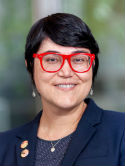| Abstract: |
Purpose: Because some stakeholders within medicine seek to diversify and attain greater workforce equity, it is critical to understand gender-based divisions within specialization. Radiation oncology (RO) has one of the smallest proportions of women representation of all specialties, and to our knowledge, no prior studies have investigated gender differences in all the disease site specializations within RO. Thus, we analyzed the relationship between gender and disease site(s) treated in academic RO (ARO). Methods and Materials: Faculty gender and disease site(s) treated by faculty from ARO departments were collected via publicly available department websites in January 2020. X2 analyses were conducted to assess differences between the proportions of women faculty treating each disease site. Results: Of 1337 ARO faculty, 408 (30.5%) were identified as women. Breast, gynecology, and pediatrics had the largest proportions of women faculty (all >40%; P < .001). A majority (53%; P < .001) of women ARO faculty treated breast. Genitourinary, thoracic, and head and neck had the smallest proportions of women faculty (all <25%; P < .001). Women ARO faculty were twice as likely to treat breast and gynecologic malignancies compared with men faculty (risk ratio [RR] with 95% CI, 2.01 [1.75-2.50]; P < .001 and RR [95% CI], 2.06 [1.72-2.79]; P <.001, respectively). Men ARO faculty were 3 times more likely to treat genitourinary cancer compared with women faculty (RR [95% CI], 0.40 [0.34-0.48]; P < .001). There was no difference in the mean number of disease sites treated between women and men ARO faculty (2.63 vs 2.53; P = .29). Conclusions: Gender differences in disease site specialization were observed in ARO. Future research into the drivers of disease site selection should be explored. © 2024 Elsevier Inc. |




